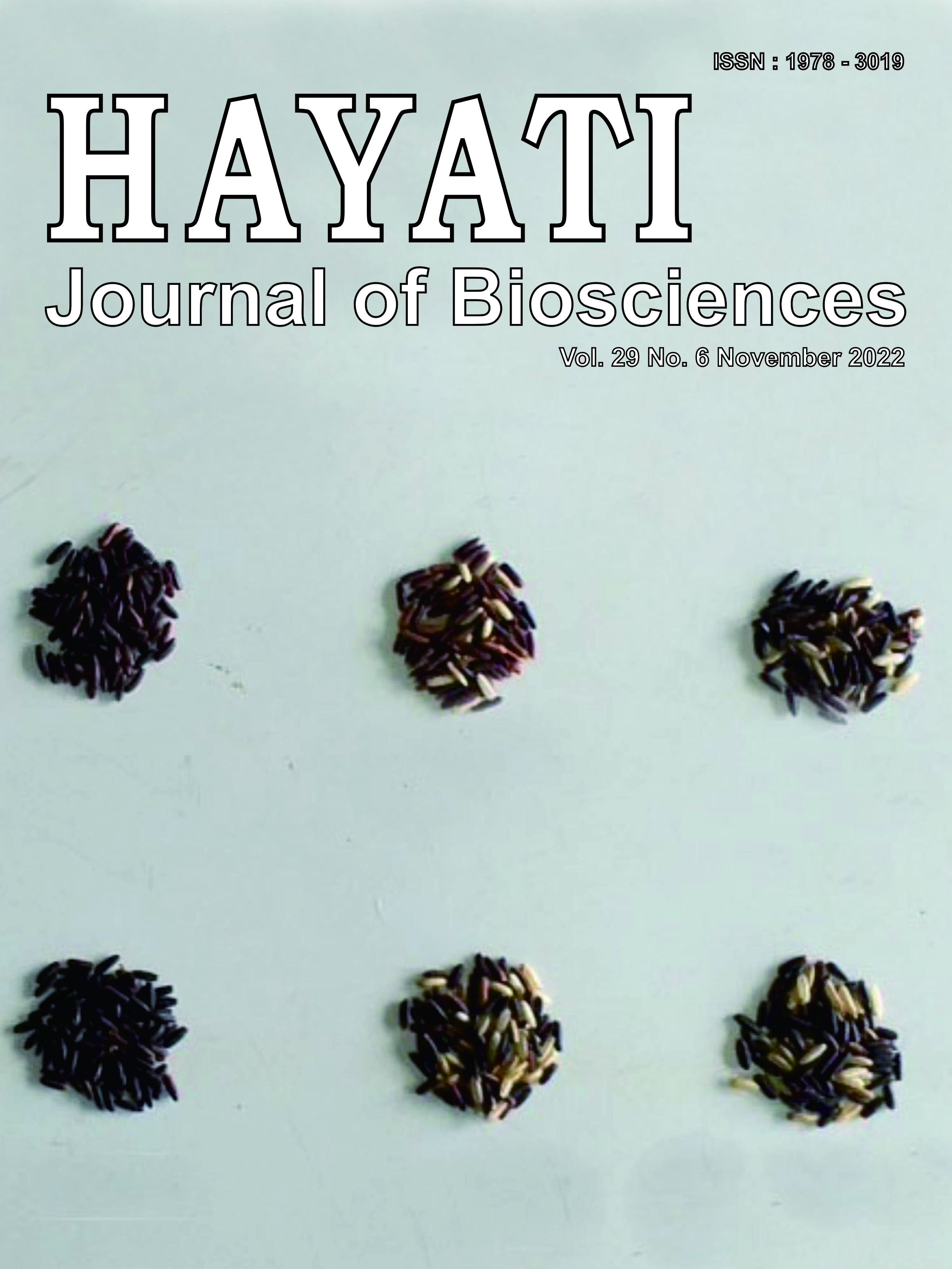The Effect of Cang Salak Tea Diet on Apolipoprotein C3 (ApoC3) Gene Expression on Hyperlipidemic Rats Model
Abstract
Cardiovascular disease (CVD) is the leading cause of global mortality and disability. Hyperlipidemia is a major risk factor for CVD that can be controlled through medical therapy, appropriate nutrition, and lifestyle. This study aimed to identify the cang salak tea diet’s effect on the ApoC3 gene expression in a hyperlipidemia rat. 18 male Wistar rats were divided equally into three groups. A high-fat-diet-induced two groups of rats, and one group was the control. Once hyperlipidemia had been achieved, one of the two groups was treated with the cang salak tea, and one group was given a standard diet for four weeks. Authenticated rat and liver tissue were collected as a source of RNA isolation. Isolated RNA was used as a reaction template for the relative quantitation qPCR using β-actin as the housekeeping gene. The ApoC3 gene was specifically amplified with a Tm value of 82.73°C, Cq 17-19, and produced a sigmoid curve. The relative expression level of the ApoC3 gene in hyperlipidemia rats fed with the cang salak tea diet was 0.46 times significantly lower than the control (1.17) and P2 (1.32) groups. These results indicate that the cang salak tea has antihyperlipidemic properties to reduce CVD risk.
Downloads
Copyright (c) 2022 Burhannuddin, I Wayan Karta, I Gusti Ngurah Dwija Putra, Felicia Kartawidjajaputra

This work is licensed under a Creative Commons Attribution-NonCommercial 4.0 International License.
HAYATI J Biosci is an open access journal and the article's license is CC-BY-NC. This license lets others distribute, remix, tweak, and build upon author's work, as long as they credit the original creation. Authors retain copyright and grant the journal/publisher non exclusive publishing rights with the work simultaneously licensed under a https://creativecommons.org/


















.png) IPB University
IPB University Department of Biology
Department of Biology The Indonesian Biological Society
The Indonesian Biological Society 

